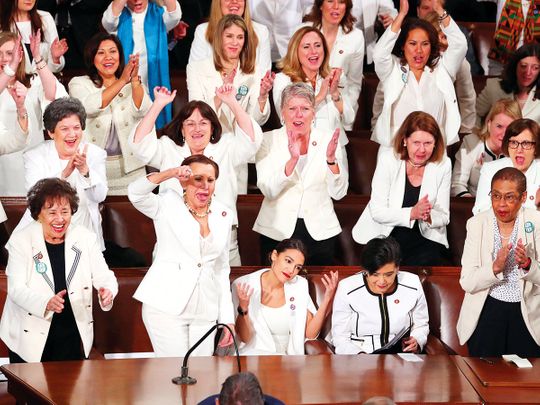
Washington, DC: He didn’t count on the women in white.
President Donald Trump’s State of the Union speech on Tuesday was billed as his attempt to unify the country. But Democratic women lawmakers from the House of Representatives, many of them dressed elegantly in white to celebrate 100 years of women having the right to vote, projected a picture of calm displeasure during Trump’s speech that made clear his version of unity was not one they could accept.
House Speaker Nancy Pelosi, the most powerful Democrat in the country, sat behind the president on the stage, wearing a white pantsuit. She shook her head or looked on disapprovingly when he challenged Democrats or laid out a dark vision of illegal immigrants assailing America.
Representative Alexandria Ocasio-Cortez, a young social media star, looked down or away when Trump delivered comments she viewed as egregious and stared daggers at colleagues who stood and clapped.
Then the president spoke about women in the workforce, and the dynamic changed. Briefly. As he lauded the growing number of women finding jobs in the economy, the women lawmakers in white rose and cheered, apparently for themselves, for filling many of the open jobs in Congress during the congressional elections in November. “You weren’t supposed to do that,” Trump said with a smile, pointing at them and drawing laughter.
Telling them not to sit down yet because there was more good news to come, Trump went on to recognize the record number of women serving in the Capitol. They cheered some more and chanted: “USA, USA!” Republicans joined in.
It was a rare moment during the long speech, which otherwise drew mixed reactions from the audience, divided with Republicans on one side of the chamber and Democrats on the other, in a reflection of the deep partisan chasm that has characterized the country before and after Trump’s 2016 election victory.












